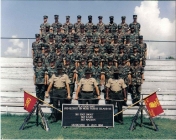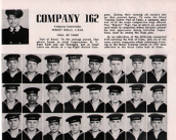Specialty Summary. Manages and operates aerospace control and warning systems, including functions involving surveillance, identification, weapons control, data link management, communications and computer system management, electronic attack (EA) and electronic protection (EP). Provides radar control and monitoring of air weapons during offensive and defensive air operations. Makes decision in the conduct of air operations and in system equipment management. Related DoD Occupational Subgroup: 122100.
Duties and Responsibilities: Operates aerospace control and warning systems equipment. Interprets and reacts to radarscope presentation and to generated console displays. Compares and reports track positions based on flight data or database files. Performs surveillance, identification, weapons control, data link, and data management functions. Conducts mission planning. Prepares and executes air tasking orders and airspace control orders. Participates as a crewmember of an operational unit. Responsible for safety of flight for air operations being controlled. Tears down, loads, unloads, and erects equipment and components.
Gathers, displays, records, and distributes operational information. Coordinates with and exchanges air movement and identification information among air defense, air control, range control, and air traffic control agencies on matters pertaining to aircraft operations. Operates data link equipment and other automated data exchange devices to gather and relay operation information. Reports emergency signals and EA observations. Maintains logs, forms, and database files. Evaluates radar detection and performance. Maintains liaison with air defense artillery, and surface and naval fire units to ensure safe passage of friendly air traffic.
Performs EP functions. Maintains maximum radar sensitivity using EP techniques to eliminate degradation caused by electronic warfare (EW) activities or other influences. Monitors operation of radar inputs and countermeasure consoles, anti-jamming displays, and radar sensors to enhance radar presentations.
Performs training, planning, standardization and evaluation, and other staff duty functions. Performs staff assistance visits to subordinate units. Tests and evaluates capabilities of new equipment and propriety of new procedures.
Specialty Qualifications:
Knowledge. Knowledge is mandatory of: characteristics and limitations of aerospace surveillance and reporting systems; aircraft and missile detection and tracking; communication equipment capabilities and limitations; radar console and data link equipment presentations; receiving, recording and relaying system information; radar and radio capabilities and limitations; fixed and mobile command and control system characteristics; aircraft control procedures and techniques; aircraft performance characteristics and armament; and meteorology concerning air weapons control operations.
Education. For entry into this specialty, completion of high school or general education development (GED) equivalency is mandatory. Also, completion of high school level courses in algebra and geometry is desirable.
Training. The following training is mandatory for award of the AFSC indicated:
1C531. Completion of a basic aerospace control and warning systems course.
1C5X1D. Completion of undergraduate weapons director training.
Experience. The following experience is mandatory for award of the AFSC indicated:
1C551. Qualification in and possession of AFSC 1C531. Also, experience performing operational functions or aerospace control and warning systems activities; operations of data display and computer input equipment or radar indicator equipment; interpretation of computer generated displays and printouts or radar console presentations of environmental systems operational procedures and techniques.
1C551D. Qualification in and possession of AFSC 1C551 or 1C531D. Also, experience performing Weapons Director duties.
1C571. Qualification in and possession of AFSC 1C551. Also, experience performing or supervising functions such as aerospace surveillance and control systems, or EA and EP activities.
1C571D. Qualification in and possession of AFSC 1C551D. Also, experience performing or supervising radar control and monitoring of air weapons.
Other. The following are mandatory as indicated: For entry into this specialty: Normal color vision as defined in AFI 48-123, Medical Examinations and Standards. For entry into AFSC 1C531D, individual must be in possession of AFSC 1C5X1 and 3-skill level or above. For entry, award, and retention of these AFSCs, must maintain eligibility to deploy and mobilize worldwide. For entry, award, and retention of AFSCs 1C5X1D, physical qualification for Weapons Director duty according to AFI 48-123. Specialty requires routine access to Secret material or similar environment. For award and retention of AFSCs 1C5XXX, completion of a current National Agency Check, Local Agency Checks and Credit (NACLC) according to AFI 31‑501, Personnel Security Program Management. NOTE: Award of the 3-skill level without a completed NACLC is authorized provided an interim Secret security clearance has been granted according to AFI 31-501.




